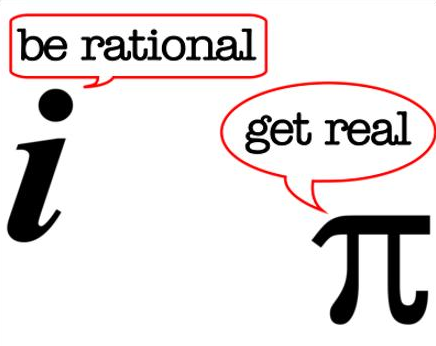Part I – Why don’t they teach this in school?
Part II – Compound Interest and Wealth
Part III – Compound Interest and Consumer Debt
Part IV – Discounted cash flows – an example using a pension buyout
Preamble
In the last post I used the example of a pension buyout to show how the discounted cash flows formula worked, and I argued that discounted cash flows are the key to all investing decisions.[1] Everything else you get inundated with – from the Financial Infotainment Industrial Complex – is just a whole lot of hype, gimmicks, tricks and tips.[2]
Which makes it all the more odd that almost nobody outside of the financial industry has ever heard of discounted cash flows, never mind actually using the formula in their investment life.
So, allow me to peel back the curtain a bit more, using the example of an annuity investment.[3]
“Life’s but a walking shadow, a poor player
That struts and frets his hour upon the stage
And then is heard no more”
Another example using discounted cash flows, to value an annuity
Is that guaranteed monthly income annuity offered by an insurance company a good deal or not? To answer the question you’d need to know how to discount cash flows to put yourself on an equal footing with your insurance company offering you the annuity. Which I did on my site once before.[4]
Let me break down some of the numbers, by way of example, or possibly by way of inspiration to others who want to start calculating discounted cash flows in their own life.
I just went on my preferred insurance provider’s website[5] and asked for a quote on a 15-year fixed time-period annuity. In exchange for a $100,000 lump sum from me, the insurance company offered me $641.15 per month, guaranteed, for the next 180 months. The question I ask is whether that is an attractive investment for my $100,000?
To answer the question I’m going to use the discounted cash flows formula Present Value = Future Value/ (1+Yield/p)N.
I offer a bit more explanation of these variables in a footnote[6]
I can discount exactly 180 different future payments of $641.15, by dividing each of them by (1+ Yield/12)N.
For the first cash flow, N is 1. For the second, N is 2. For the 180th monthly payment, N is 180.
This looks like this table in my spreadsheet, which contains 180 rows of numbers and discounted cash flows formulas:
| N Period | Monthly Payment | Formula: PV = FV/(1+Y/p)N |
| 1 | $641.15 | =$641.15/(1+Y/12)1 |
| 2 | $641.15 | =$641.15/(1+Y/12)2 |
| 3 | $641.15 | =$641.15/(1+Y/12)3 |
| … | $641.15 | =$641.15/(1+Y/12)… |
| 180 | $641.15 | =$641.15/(1+Y/12)180 |
Once I have programmed a spreadsheet to calculate 180 individual discounted values for $641.15, I next program the spreadsheet to add up all 180 payments.[7]
Next I can input a value for Y, or Yield, to try to figure what kind of deal I’m offered by my annuity company.
I compare the sum of all 180 values to my original $100,000 investment. To come up with a comparable yield on the annuity, I input different values for yields into my spreadsheet. For my purposes I can find the ‘yield’ through ‘iteration,’ basically trying different values until I match up the sum of discounted annuity payments to a final value of $100,000.
If I assume Y is 2%, as I’ve shown in the table below, it turns out the sum of all cash flows is too small and does not quite add up to $100,000.
| N Period | Monthly Payment | Formula: PV = FV/(1+Y/p)N | Calculation |
| 1 | $641.15 | =$641.15/(1+0.02/12)1 | $640.08 |
| 2 | $641.15 | =$641.15/(1+0.02/12)2 | $639.02 |
| 3 | $641.15 | =$641.15/(1+0.02/12)3 | $637.95 |
| 180 | $641.15 | =$641.15/(1+0.02/12)180 | $475.09 |
| TOTAL | $115,407.00 | $99,633.46 | $99,633.46 |
If I instead assume Y is 1.5%, it turns out the sum of all cash flows is too large and adds up to more than $100,000.
| N Period | Monthly Payment | Formula: PV = FV/(1+Y/p)N | Calculation |
| 1 | $641.15 | =$641.15/(1+0.015/12)1 | $640.35 |
| 2 | $641.15 | =$641.15/(1+0.015/12)2 | $639.55 |
| 3 | $641.15 | =$641.15/(1+0.015/12)3 | $638.75 |
| 180 | $641.15 | =$641.15/(1+0.015/12)180 | $512.04 |
| TOTAL | $115,407.00 | $103,287.51 | $103,287.51 |
So I keep trying to find, using my spreadsheet, the value that makes all 180 discounted payments of $641.15 equal to $100,000. Once I find that, I know what kind of yield, or return, my insurance company offers me on my annuity investment
It turns out, through iteration, that 1.92% is the yield I get by investing $100,000 today and receiving $641.15 per month guaranteed for the next 15 years.
The fact that 1.92% is an absolutely pathetic return is not surprising, nor notable. As I’ve written before, insurance companies are in the business of buying money cheaply and selling money expensively, and retail annuities are the ultimate source of cheap money for them.
What is notable is that we, as consumers, have no way of evaluating the return on an annuity if we can’t do discounted cash flows.
Which is why I say, ask not what you can do with your insurance company. Ask what your insurance company is doing to you.
Just like credit card companies do not want you to know that the average American household, carrying the average credit card balance, at an average interest rate, will pay $2.6 million over 40 years because of compound interest[8], similarly, insurance companies can build massive skyscrapers in major cities because they know how to use the discounted cash flow formula to get money cheaply.
And you don’t.
Please see earlier posts
Part I – Why don’t they teach this in school?,
Part II – Compound Interest and Wealth
Part III – Compound Interest and Consumer Debt
Part IV – Discounted cash flows – Pension Buyout Example
Part VI – Conclusion, or why everyone needs to know this math for the good of society
and Video Posts
Video Post: Compound Interest Metaphor – The Rainbow Bridge
Video Post: Time Value of Money Explained
[1] Put it this way, if you’re an individual (I will exempt broker-dealers, HFT and many professional investors from this next statement because they are often doing something different) and you’re not employing a discounted cash flows formula, you’re gambling, not investing. Which is to say, 99.5% (and I rounded down to be conservative) of us are gambling when we purchase an individual stock.
[2] Are the Chinese buying it? Is your gym-budding selling? Will baby-boomer demographic trends boost this? Is Bill Ackman short the stock? Is it a breakthrough miracle drug? Will nano-technology make it obsolete? All hype.
[3] I’m using an annuity to illustrate the use of the discounted cash flow formula because it’s easier to talk about the straight math of future annuity cash flows than it is to talk about modeling future stock dividends and profits. That involves a longer conversation about equities actually just being a series of future cash flows, which most people will not want to wrap their head around at this time.
[4] By the way, I just re-read my piece on annuities from six months ago. You should go read it. It’s good.
[5] I mentioned USAA before in my piece on annuities, because their customer service is awesome. I have no relationship to them other than as a customer and I just like them. I assume their quote is standard for an annuity provider, neither better nor worse than the competition. As I wrote you before, USAA, you should totally make me your President Palmer, peddling life insurance for you. Call me, maybe.
[6] This time with the formula I’ve introduced the variable p, which is the number of times per year that money gets compounded. In the case of monthly payments, p is 12, because I have to take into account compounding 12 times per year. N remains the number associated with each payment, from 1 to 180 in our example, unique to each monthly payment. Yield, also known as Discount Rate, is the variable I’m going to solve for, to figure out whether the investment is a good deal or not.
[7] Those of you reading this who have spreadsheet experience will note that it’s very simple to create 180 nearly identical rows of formulas simply by a click-and-drag of a single formula. Similarly, adding up 180 different discounted cash flows is as easy as typing “=sum()” into a spreadsheet cell and referencing the correct cells. Out pops the answer.
Post read (23286) times.









